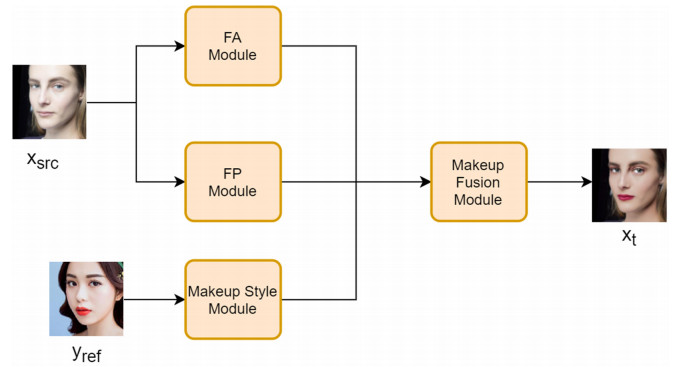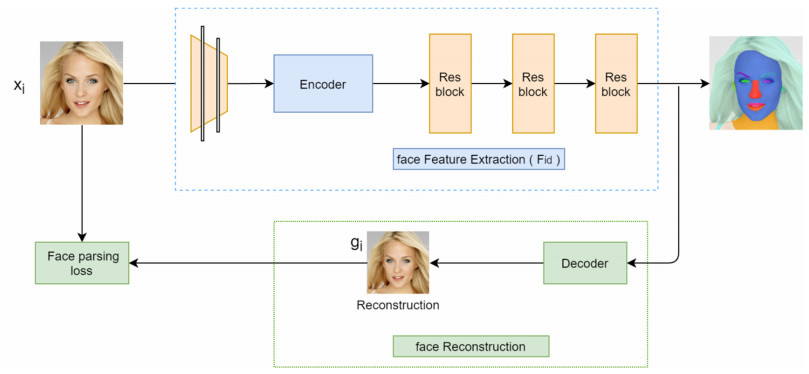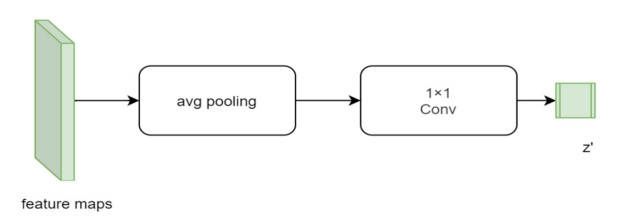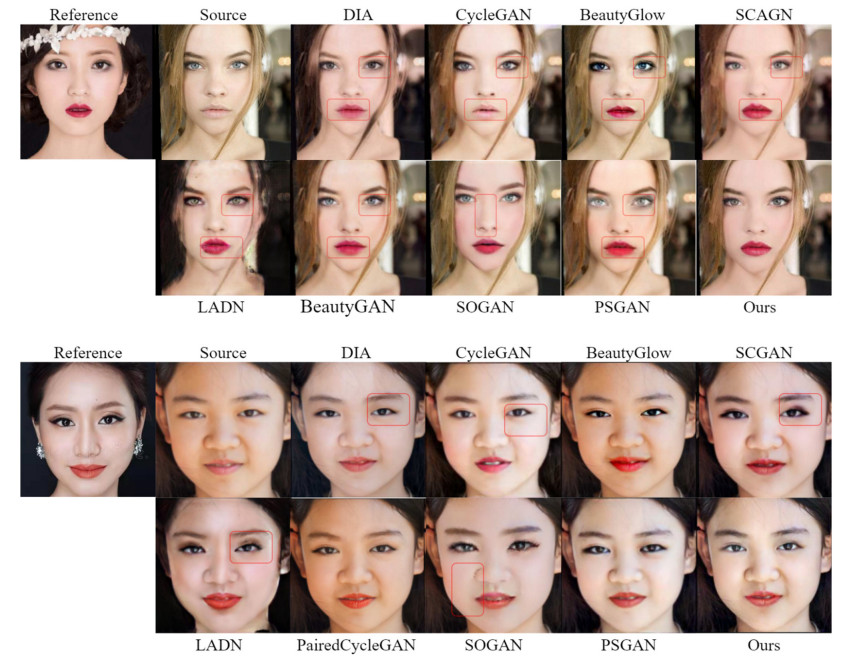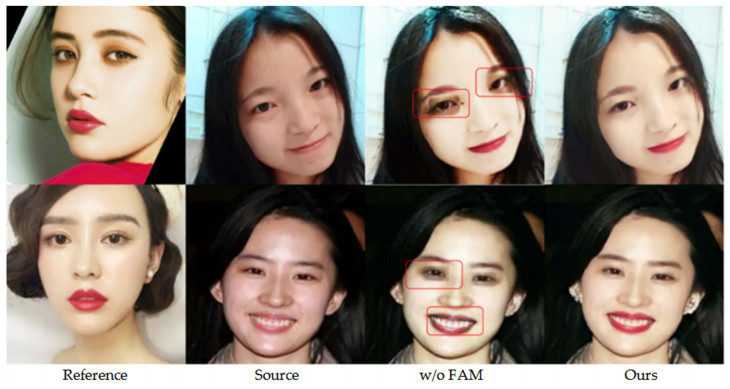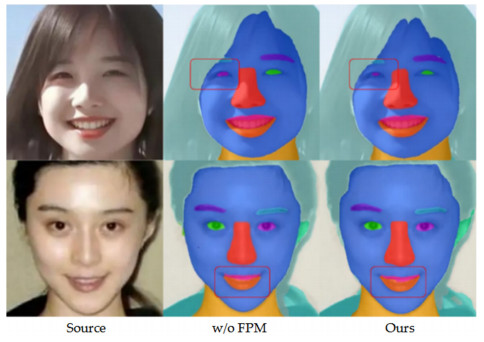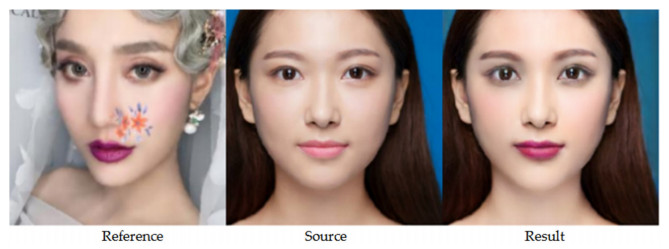1.
Introduction
1.1. Background
Meta heuristic algorithms mainly seek optimal solutions by simulating natural phenomena. This kind of algorithm is often called the intelligent optimization algorithm. At present, algorithms of this type are needed in a large number of fields, such as engineering design problems[1,2,3], machine learning and theoretical analysis[4,5,6,7] and energy saving and environmental protection[8,9,10]. Sometimes people need to know what size industrial parts to choose to minimize cost, how to place trash cans in the city to provide maximum convenience for pedestrians, and so on. These problems can be solved quickly with the help of optimization algorithms. Depending on the source of inspiration, some researchers divide them into four categories: Population-based methods, methods inspired by physical phenomena, evolution-based strategies and methods inspired by human activities[11]. Population-based meta-heuristic algorithms explore the search space through a population containing multiple individuals. Each individual represents a potential solution, and these individuals generate new solutions through different update ways. Through several iterations, the agents in the population gradually converge to the vicinity of the true solution. Inspired by natural selection, evolution-based meta-heuristic algorithms search for optimal solutions by simulating the evolutionary and genetic mechanisms of living organisms. The algorithm updates the individual through genetic operations, produces new solutions and selects better offspring. Physics-based metaheuristics update individuals by simulating physical laws and gradually approaching the true solution. Human-based metaheuristics are updating agents by imitating human behavior. Researchers have proposed many metaheuristic algorithms like this one by looking to nature for inspiration. They have the advantage of fast convergence and simple computation. However, excessive pursuit of convergence speed may lead to insufficient population diversity and premature convergence. Of course, these challenges are also the motivation for researchers to continuously explore and improve metaheuristic algorithms.
1.2. Literature review
The chicken swarm optimization (CSO) algorithm was initially proposed by Meng et al. [12] in 2014. Since then, numerous scholars have made enhancements and extensions to the algorithm, enabling its application across a broader range of disciplines. Inspired by the behavior of chickens, the CSO algorithm incorporates three different roles in the swarm: Roosters, hens and chicks. The rooster assumes an active role in food search within the flock while hens follow suit; meanwhile, chicks explore their surroundings for sustenance. Each colony can be divided into groups comprising one rooster alongside multiple hens and chicks. Different roosters adhere to varying locomotion rules with competition arising among them based on a specific hierarchical order. Aiming at the problem that the original CSO algorithm is easy to converge prematurely and fall into local optimum, many people have improved the update method of agents. To address this issue, Wu et al.[13] introduced a new CSO that incorporates a portion of roosters' learning into the chicks' position update equation and introduces inertia weight and learning factor. As the most numerous individual in the population, the performance of CSO is greatly affected by how the hens update. Therefore, Chen et al.[14] improved the update equation of hens.
The process of chicks following hens to find food is blind. Due to the lack of autonomy, the chicks are easily linked by the hens and, thus, fall into local optima. To solve this problem, Wang et al.[15] proposed to introduce a mutation strategy for chicks to enhance the population diversity and help them get rid of the dilemma of falling into local optimum. The hens follow the lead rooster, while the chicks follow their mother for food. When the roosters get trapped in local optima, the hens and chicks will converge too early, reducing the effect of global optimization. Based on this problem, Verma et al. [16] introduced Levy's Flight strategy to solve the problems of local optimal and premature convergence. Ahmed et al.[17] improved the search capability of CSO by applying logistic and tending to chaotic maps to help the CSO swarm to better explore the search space. Many researchers prefer to combine universal strategies such as Levy's flight and chaotic map with different swarm intelligence algorithms to improve the search effect of the algorithm. Other researchers have set their sights on improving these strategies. Recently, Yang et al.[18] studied how to improve the probabilistic selection of chaotic operators based on the maximum Lyapunov exponent (MLE), and added this new multiple chaotic local operator to the slime mold algorithm (SMA) to achieve surprising results.
Aiming at the problem that the convergence speed of CSO algorithm is not satisfactory enough and difficulty in obtaining the global optimal solution of CSO, Wang et al.[19] proposed an adaptive CSO algorithm with fuzzy strategy (FCSO). In the FCSO algorithm, the fuzzy system and cosine function are integrated into the CSO algorithm simultaneously. The fusion of optimization algorithms with machine learning techniques represents a widely explored area of research. Moldovan [20], for instance, leveraged the CSO algorithm to enhance the performance of the support vector machine (SVM) through hyperparameter optimization. This approach aims to achieve improved classification accuracy and showcases the growing synergy between optimization techniques and machine learning methods. In 2018, Mohamed [21] mapped real number vectors to integer space and used modified CSO to improve the performance of the greedy algorithm, which achieved good results. In addition to, some scholars have combined CSO with other swarm intelligence optimization algorithms or evolutionary algorithms to make up for some shortcomings of CSO. Abbas et al.[22] combined CSO and the bacterial foraging optimization (BFA) algorithm, and this hybrid technique effectively reduced the computational cost and load. Torabi and Safi-Esfahani [23] combined CSO with the raven roosting optimization (RRO) algorithm to achieve a better transition between local exploitation and global exploration. Deb and Gao [24] combined CSO and the ant lion optimization algorithm (ALO) [25] to deal with the charger distribution problem, and the combination of CSO and ALO can improve the accuracy of CSO, thus preventing it from falling into local optimum. Deb et al. [26] also proposed the synergy of CSO with a new teaching-learning-based optimization (TLBO) algorithm, and proposed a new constraint handling mechanism to improve CSO. In 2019, Zouache et al.[27] successfully applied CSO to the field of multi-objective optimization. Since then, some scholars [28] have continuously improved multi-objective CSO to improve algorithm performance and applied it to a lot of fields.
As previously mentioned in the CSO algorithm, roosters exhibit the highest search capability and are succeeded by hens, the largest agent class in the population. Chicks rely on their mothers for foraging and lack independence. Roosters handle global exploration, while hens and chicks manage local exploitation. However, the algorithm's search accuracy is unsatisfactory, prone to falling into local optima. Two reasons contribute to these issues: The hen's search method is not optimal, leading to low accuracy and premature convergence, and chicks' reliance on their mothers for food results in a limited learning scope and insufficient autonomous search ability. Consequently, chicks prematurely converge under maternal influence, leading to local optima challenges. Addressing this urgent concern, the paper is dedicated to refining the search methods for hens and chicks. It introduces a new CSO algorithm called chicken swarm optimization combining Padˊe approximation, random learning and population reduction techniques (PRPCSO). The primary contributions of this study are outlined as follows:
1) A novel and efficient approach based on Padˊe approximate technique is proposed to enhance the ability of the CSO algorithm in solving optimization problems. The fitting function used in this strategy is different from other linear approximation or quadratic approximation methods, but with the help of a complex nonlinear rational function, the extreme point is calculated from the mathematical point of view to approximate, which can significantly improve the solution accuracy and development ability of the CSO algorithm, and avoid local convergence.
2) Aiming at the problem that chicks are easy to fall into local optimum under the influence of their mother hens, a random learning mechanism is introduced. This mechanism has a special way of thinking when it comes to selecting random individuals. It selects from the same type of high-performing agents (i.e., chicks), rather than selecting them completely at random. This mechanism encourages chicks to follow their mother while learning from other good peers, preventing them from falling into local optima.
3) This study has developed a novel intelligent population size shrinking strategy. It not only considers adjusting the population size based on the number of fitness function calls but also creatively takes into account the variations in the obtained optimal solutions over the recent iterations. The strategy can eliminate bad and preserve good, prevent premature convergence, and reduce the amount of computation.
The rest of this paper is organized as follows. In Section 2, the CSO algorithm is briefly reviewed. Section 3 describes the main content and framework of PRPCSO. In Section 4, our proposed algorithm is tested with the other four famous, excellent algorithms on 23 test functions, and the experimental results are compared and analyzed. To investigate the application of PRPCSO to real problems, in Section 5, six real engineering design problems are described and analyzed experimentally. Finally, Section 6 contains the conclusions and perspectives of this work.
2.
Mathematical model and basic knowledge
2.1. Principle of CSO algorithm
CSO is inspired by the foraging behavior of the flock and maps the behavior of the flock to mathematics. For simplicity, the behavior of the chicken is idealized according to the following rules.
1) A chicken swarm is divided into small groups. Each group has a rooster, many hens and chicks.
2) The role identification of chickens and the division of groups are realized according to their fitness values. Several chickens with the best fitness values are selected as roosters, and each rooster is used as the leader of a group. Except for a few chicks with the worst fitness values, the rest were identified as hens. The hens randomly select a group and randomly associates with some chicks in the group.
3) The hierarchy, dominance and mother-child relationships in the population are updated every few (G) iterations.
4) The rooster acts as a leader in the search for food. Suppose chickens steal food randomly from each other. Chicks search for food near their mother (hens).
Suppose rNum, hNum, cNum and mNum correspond to the number of roosters, chickens, chickens and mother hens, respectively. For the problem of optimizing minimization, rNum chickens with the lowest fitness value are assumed to be roosters, the worst cNum chicken is considered to be chicks and the rest of the chickens are considered hens. mNum chickens are randomly selected as mother hens in the hens swarm. All N chickens are represented by their positions xti,j, (i∈[1,...,N],j∈[1,...,D]) at time t, looking for food in a search space.
2.2. The mathematics of CSO
Different members of the swarm move differently. Roosters search in the following way:
Here Randn(0,σ2) denotes a random number generated from a Gaussian distribution with mean zero and variance σ2. k is the index of a rooster selected at random from the roosters and fk is its corresponding fitness value. ϵ is the smallest constant added to avoid a zero denominator.
Hens also compete with other chickens for food while following their mate roosters for food:
where Rand is a random number generated from a uniform distribution obeying [0, 1], r1 is the index of the mate of this hen in the group and its corresponding fitness value is fr1. In addition, an individual randomly selected from the group of roosters and hens is r2, whose fitness value is fr2. C1 and C2 represent the influence factors of the hen's mate and other hens on the focal hen.
The chicks are entirely dependent on the influence of their mother for locating food:
where m is the index of the mother hen that the chick follows and xtm,j is the position of the mother hen of the ith chick (i.e., the mth hen) in the jth dimension. FL is a parameter chosen from [0, 2] that represents the influence factor of the mother hen's position on the position of this chick.
3.
The proposed optimization algorithm
3.1. Padˊe approximate strategy
In this section, the Padˊe approximate technique is introduced in order to construct an efficient intelligent optimization algorithm. This is a local search strategy that swiftly identifies optimal points in the proximity of several agents through solving for extreme points in a rational function fitting manner. This strategy contributes to enhancing the precision and efficiency of the local search carried out by hens. The Padˊe approximation approximates f(x) by using the following rational function:
which the mathematical expression is a kind of Padˊe approximation. The coefficients pi and qi are unique up to constant and are generally normalized as q0=1. Padˊe approximate technique is a powerful approximate method for approximating rational functions. One of the most important advantages is that it is not restricted to the radius of convergence of the Taylor expansion[29]. Specifically, Padˊe approximate has the best convergence performance when the numerator and denominator have equal or almost equal orders. Rational fractions can provide better approximations either within or outside the radius of convergence. This method is the backbone of asymptotic waveform evaluation[30,31] and has also been widely used by researchers to calculate frequency responses in recent years due to its extremely high efficiency and accuracy. This is the inspiration for our use of rational functions instead of standard polynomials. Therefore, in this paper, Padˊe approximate technique is used to help hens to locate excellent solutions more quickly and accurately, which improves the development ability and solution accuracy of the CSO algorithm. We consider using the following [2,1] Padˊe approximation:
where a1,a2 and a3 are real parameters. Let T(x) be the interpolation rational function of f(x) at abscissae xk, xk+1, xk+2. That is,
According to Eq (3.3), it can be calculated that:
Combining the above formulas, the minimal of approximate curve T(x) can be attained as follows:
The Padˊe approximate operator is a local search operator that uses a curve to fit the structure of a rational function to reach the extreme point of the curve. In the Eq (3.7), there are two solutions of x∗, and here, the greedy idea is used to compare these two x∗ with the fitness value of the original hen to select the best one among the three kinds of hens. The whole process is embodied in Algorithm 1, where the hen is first updated to get xt+1 in the original CSO way with Eqs (2.3) and (2.4). Next, the Padˊe approximate strategy is performed and three neighboring hens xk, xk+1, xk+2 in the hen group are selected and the parameters a1, a2 and a3 are calculated based on the positions and fitness values of these three hens, shown in Eqs (3.4)–(3.6). x∗ is split into two solutions H(k) and h(k). Finally, the best one among the three (H(k), h(k) and xt+1) is selected as the output solution.
The foraging capability of hens plays a crucial role in determining the search efficiency of the algorithm and directly influences the foraging efficiency of their offspring. Hence, integrating the Padˊe approximation strategy can enhance the hen's food-finding ability, ultimately maximizing the overall performance of the algorithm.
3.2. Random learning strategy
Considering that the chicks' search for food was completely affected by its mother, it was difficult to escape the local optimal situation when the mother hens are in a local optimal, so this work incorporates a random learning strategy for the process of finding food for chicks. The objective of this strategy is to decrease the reliance of chicks on their mothers and enhance the diversity of the population. As chicks follow mother hens for food, they also get help from well-performing agents within the same class. This not only assists chicks in steering clear of local optima, but also ensures a progressive behavior in chicks.
where k1, k2 and k3 are three different random indexes. ∼ is a placeholder for the output parameter, meaning that the minimum value of fit(ki) is ignored; we only need to record the index k of the minimum value. Compare the fitness values of the chickens corresponding to the three indexes and select the optimal chicken xk. The specific process can be seen in Algorithm 2.
The random learning strategy can reduce the dependence of the chicks on their mothers. If the mother chickens are unfortunate enough to fall into the local optimum, this mechanism ensures that chicks still retain the ability to escape from local extrema. Choosing the most suitable individual from three random candidates for learning rather than following a purely random approach ensures that the chicks' actions progress effectively. In general, incorporating the random learning strategy can increase the diversity of the population and overcome premature convergence.
3.3. Intelligent population size shrinkage strategy
Several swarm intelligence optimization algorithms have a common problem; that is, in the later stage of iteration, the algorithm tends to converge, thus a large number of individuals participating in optimization is redundant for the algorithm. Many researchers consider dynamically adjusting the population size. For example, Yang et al.[32] proposed a new search method called a three-phase search approach with dynamic population size (TPSDP) and added the idea of dynamic population size, which depends on the number of iterations. Based on this, we propose a new intelligent population size shrinkage strategy. It takes into account both the number of fitness function calls and the optimal solution over r iterations. It endeavors to sustain a sizable population in the initial iterations, particularly when the algorithm's obtained optimal solution exhibits substantial fluctuations. Conversely, it diminishes the population size during later iterations when the algorithm's optimal solution shows minimal variability. This concept aims to safeguard the algorithm's optimization effectiveness while alleviating computational demands. The population size gradually decreases according to Eq (3.11).
Here pmax and pmin are the preset population maximum and minimum population sizes, and pop is the number of agents within the current population. F is the set of optimal solutions obtained by the algorithm in the last r iterations, max(F) is the maximum value in the set F, min(F) is the minimum value in the set F and mean(F) is the average value of F. Φ(F) evaluates the performance of the last r iterations by looking at the information provided by the maximum, minimum and average value of F and Φ(F) is a number belonging to the range between zero and one. The value of Φ(F) is small when the convergence of the last r iterations is fast, the value of Φ(F) converges to one when the algorithm's optimization process tends to converge and ι is a parameter. MAXNFE is the maximum number of fitness function evaluations and NFE is the number of fitness function evaluations within the current number of iterations. ϵ is the smallest constant added to avoid a zero denominator. Clearly, at the early stage of the population iteration, the algorithm converges faster, the NFE is smaller and the population size is reduced slowly, which is exactly what this study wants to achieve. When the algorithm reaches the late iteration, the NFE value gets closer to MAXNFE and the convergence rate of the algorithm slows down so that the population size approaches pmin. This mechanism of intelligently adjusting the population size helps the algorithm to make a smooth transition between global exploration and local exploitation. Premature convergence is avoided and the computational burden is reduced. See Algorithm 3 for details.
Considering the unique population relationship updating mechanism of the CSO algorithm; that is, the population is disrupted and the order is restablished every G generations, it is possible to have an error while the number of chickens decreases but the relationships between them do not change. The population size shrinkage strategy is combined with the population relationship updating mechanism, then the population size is updated every G generations. After that, the chicken families are redistributed to the new group to avoid the mismatch between the number of chickens and the relationship. Since the last r optimal solutions are needed in the population size reduction strategy, the population size reduction strategy and the population relationship updating mechanism are applied when mod(t+1,G)==1 after the optimal solution is found in the tth iteration.
Because the identity of the chickens and the relationship between them in the CSO algorithm are judged by the fitness value, the worst individuals can be naturally deleted after the implementation of the intelligent population size shrinkage strategy so that the excellent individuals can be retained. Reducing the population size helps to avoid getting stuck in a local optimum as well as reduce the computational effort of the algorithm. This process does not affect the accuracy of the algorithm because the poor performing chickens are removed.
How to balance exploration and exploitation is a very important research content for swarm intelligence algorithms (SIA). Most SIA focus on global exploration in the early stage and focus on local exploitation in the later stage, but CSO is different from it. As mentioned earlier, in CSO, roosters are responsible for global exploration, while hens and chicks are exploited in the vicinity of their respective leaders, roosters and mother hens, respectively. In each iteration, these three types of chickens are searching for the optimal solution at the same time, so the global exploration and local exploitation of CSO are carried out simultaneously. The population size shrinkage strategy and the population relationship update mechanism are carried out simultaneously, so when the population size changes, the roles of chickens in the population will be reconstructed. In the new population, agents with strong search ability can still be selected to be responsible for global exploration, and agents with weak search ability are responsible for local exploitation. When the algorithm enters the later stage, the number of agents with strong ability (roosters) is greatly reduced, and the number of agents with weak search ability (hens and chicks) is also reduced, but the hens are still the most numerous roles in all agents. The proportion of agents responsible for global exploration and local exploitation has not changed, so the balance between exploitation and exploration can be maintained even when the number of agents decreases.
3.4. The framework of PRPCSO
The improvement in CSO is mainly reflected in three aspects. First, the Padˊe approximate operator helps the hens seek the optimal solution faster. It helps the agents to quickly converge near the approximate true solution, so as to improve the accuracy and exploitation ability of the algorithm. Meanwhile, due to the unique connection between hens and chicks, it also partially helps chicks in the foraging process. Second, combination of random learning strategy can help the population to be more diverse and help chicks avoid falling into local optima. Finally, a new intelligent population size shrinkage strategy is proposed. When the algorithm shows a convergence trend in nearly r iterations, the poor individuals in the population were deleted. These three strategies are combined to construct the PRPCSO of this work.
The implementation process of PRPCSO is described in Algorithm 4. Initially, the population is initialized, then the ranks and individual relationships within the population are updated in the first iteration. The largest number of chickens in the population, referred to as "hens", is then updated using the Padˊe approximate strategy outlined in Algorithm 1. Because the chicks completely rely on their mother hens to find food, their position update method is combined with a random learning strategy to avoid falling into local optimum, as shown in Algorithm 2. After updating the positions of all three types of chickens, fitness values for each individual are evaluated. Once a preset number of G iterations has been completed, the population undergoes shuffling and poor-performing chickens are removed based on the population size shrinkage strategy mentioned in Algorithm 3. This process creates a new order and individual relationships within the population. The iteration continues until termination conditions are met and outputs global optimal solution.
4.
Experimental Study Ⅰ: Solving benchmark functions
4.1. Experimental preparation
To evaluate the robustness of PRPCSO, it was compared with six excellent algorithms on test functions and some engineering problems, they are CSO, grey wolf optimizer (GWO)[33], sine cosine algorithm (SCA)[34], ALO[25], salp swarm algorithm (SSA)[35], moth-flame optimization (MFO)[36]. All experiments were run on MATLAB (R2021b). The portable computer used in this work is 12th Gen Intel (R) Core (trademark) i7-12700 (20 central processing units) with @2.10 Giga Hertz. Windows 10 operating system. All algorithms are compared after running 30 times with an initial population of 50 and 1000 iterations. All experiments were performed with the same settings. Finally, the performance metrics of 30 runs on the benchmark functions are obtained, which are the mean, standard deviation (std), minimum and maximum values of various benchmark functions, which are given in Tables 6–8, respectively. In the table, the bold font is the optimal solution, and the underlined font represents the sub-optimal solution.
4.2. Complexity analysis
As mentioned before, pop stands for the number of agents, dim is the number of dimensions and M is the maximum number of iterations. The computational complexity of the metaheuristic can be defined as: O(pop⋅dim⋅M). The computational complexity of PRPCSO is O(pop⋅dim+(2pop⋅dim+pop+2)⋅M+pop⋅dim/G)≈O(pop⋅dim⋅M). Because it is shown in Algorithm 4, it has only one inner loop, and the algorithm needs additional fitness evaluation for H(i) and h(i) only in the Padˊe approximate part. To ensure fair and unbiased experiments, pop, dim and M are kept the same for all algorithms in this paper.
4.3. Benchmark functions
This section verifies the search capability of PRPCSO through 23 classical test functions. PRPCSO is used to find the extrema of these 23 functions. These functions are classical problems used to test the robustness of the algorithm and they are of various types, which facilitates researchers to investigate the algorithm from different aspects.
Tables 1–3 show the details of the 23 functions, where F1 to F13 are high-dimensional problems and F14 to F23 are mixed multi-modal problems. Functions F1 to F7 are unimodal, F6 is a step function with a minimum and is discontinuous, and F7 is a quadratic function containing noise. The multi-modal functions are F8 to F13, whose number of locally optimal solutions grows exponentially with the dimensionality of the problem, and it has been pointed out in [38] that this type of problem seems to be the most difficult class of optimization algorithms. The last class is F14 to F23, which are low-dimensional and contain few locally optimal solutions.
Table 1 corresponds to the mathematical representation of seven unimodal benchmark functions including function calculation formulas, dimension, the scope of the search space and the true optimal solution. Figure 3 is a schematic diagram on its 3D space, and it can be seen that the 3D plot of each function is concave and unimodal. Table 2 and Figure 4 correspond to the mathematical representation and 3D image presentation of the six multi-modal benchmark functions, respectively. It is obvious that the mathematical formulation of the multi-modal function is more complex than the mathematical formulation of the unimodel, and its multi-modal nature can be clearly seen from Figure 4. Finally, Table 3 and Figure 5 show fixed-dimension multi-modal benchmark functions, which have smaller dimension and search range than the other two, and the true optimal solution is also different from them.
4.4. Parameter setting
This section describes the parameter settings involved in the experiments. In order to ensure the fairness of the experiment, we only set the common parameters of all algorithms (such as population size, dimension of decision variable, maximum iteration number, etc.) without modifying the original code of the comparison algorithm. Other unique parameters will be configured in accordance with the settings outlined in the respective references of the algorithm. Moreover, specific parameters (ι, pmin, r) associated with PRPCSO require testing to ascertain their optimal values for the final configuration. For the parameter MAXNFE, it is set to 200,000 in order to meet the requirements of the number of iterations; the other parameters of PRPCSO are kept consistent with the CSO algorithm.
During the experiment, four levels were considered for each parameter to be tested separately. Following the principles of the Taguchi method [37], 16 distinct value schemes were delimited. Considering that these three parameters all serve the population shrinkage strategy in order to reduce the running pressure of the algorithm, the average time of each run after running PRPCSO 30 times is taken as the response variable (consider the F1 test function), and the experimental results are detailed in Table 4.
The average response variable values (ARV) corresponding to different levels of each parameter are shown in Table 5. The results indicate that the algorithm achieves optimal running speed when ι is set to 0.2, pmin is set to 26 and r is set to five.
4.5. Performance assessment
The test results of the PRPCSO algorithm and the other six algorithms on 23 benchmark functions are evaluated in this section. See Tables 6–8. The performance of each algorithm on these seven unimodal are provided in Table 6. The table results indicate GWO's strong competitiveness in addressing unimodal problems. However, PRPCSO still demonstrates commendable performance across five functions, excelling notably in functions F4 and F5, while securing the second-best performance in the remaining three functions (F1, F2, F7). The optimization problems in the F8 to F13 class are considered to be the most challenging. According to the performance analysis of these six problems in Table 7, it is not difficult to find that the performance of our proposed algorithm is significantly better than the other six comparison algorithms on F9–F12. In addition, the ranking of our proposed algorithm on F13 also shows strong competitiveness, which proves the superiority of PRPCSO in solving multimodal optimization problems. F14 to F23 are fixed-dimension multi-modal optimization problems. Table 8 shows that PRPCSO performs satisfactorily on 10 benchmark functions. Although other comparison algorithms also achieve similar optimal solutions, PRPCSO achieves lower std values with similar solutions. This proves that the superiority of PRPCSO is not only reflected in the solution accuracy but also in the solution robustness. In addition, PRPCSO shows better search ability than CSO on all test functions, which indicates that our proposed algorithm is an effective improvement.
Unimodal functions can be used to evaluate the exploitation ability of an algorithm, and multi-modal functions can be used to evaluate the exploration ability of an algorithm. The ability of the algorithm to avoid local optima can be evaluated by using a multi-modal function. The experimental performance of the PRPCSO algorithm on 23 functions shows that it is an excellent combination of local exploitation and global exploration.
4.6. Statistical analysis
The nonparametric Friedman test[39] was used to evaluate algorithms and calculate the probability values (p-values). This statistical test is used for multiple comparisons to determine significant differences between algorithms, and the number of trials in this paper is 30. The Friedman statistic can be computed using the following formula:
In this work, N and k represent the number of datasets and algorithms, respectively, which are 23 and five; rj denotes the average ranking of jth algorithm. If the p-value is below a preset significance level (0.05 in this work), the null hypothesis is rejected and a statistically noteworthy distinction in the performance of each algorithm can be confirmed.
Table 9 displays the outcomes of the test, where our proposed algorithm PRPCSO has the highest average rank on 14 test functions and, in addition, achieves sub-optimal average rank on four functions (F1, F7, F22, F23). The p-values were all ≤0.05 and the null hypothesis was rejected. The advantages of PRPCSO over other algorithms are proved. In addition, the Friedman test is performed on the ranking of these seven algorithms over 23 functions, and the overall mean ranks obtained are shown in Figure 6. It is easy to find that PRPCSO ranks first, followed by GWO, SSA, CSO, MFO, ALO and SCA. PRPCSO demonstrates a strong performance, while SSA and GWO also exhibit notable competitiveness in the results.
After the above experimental analysis of 23 test functions, it can be concluded that compared with CSO, PRPCSO has greatly improved the solution accuracy and robustness in single-modal, multi-modal and mixed-dimensional multi-modal problems. This is due to the integration of multiple strategies: First, the Padˊe approximation strategy helps hens to locate the optimal solution more quickly and accurately, and also improves the solving ability of chicks. This strategy helps the algorithm to exploit better locally. Second, the random learning mechanism is also very effective to help the chicks, which largely avoids the agents from falling into the dilemma of local optimum. In addition, the population size shrinkage strategy not only improves the running speed, but also ensures the balance between global exploration and local exploitation.
5.
Experimental Study Ⅱ: Solving engineering problems
Benchmark function tests underscore the superior performance of PRPCSO in various straightforward problems. Nevertheless, real-world optimization challenges in diverse fields tend to be more intricate than benchmark functions, often involving complex computational methods and constraints. Consequently, there is a need to assess the effectiveness of PRPCSO in addressing real-world problems. Six practical engineering problems are first introduced (schematics from[40,41]) in this section. PRPCSO is tested and compared with the other six excellent comparison algorithms (CSO, GWO, SCA, ALO, SSA and MFO) on these practical engineering design problems. These are the questions: Three-bar truss design, vessel design, rolling element bearing design, tension/compression spring design, cantilever beam design and gear train design. The engineering optimization problems pose significant challenges due to the presence of numerous intricate constraints in the solving process.
5.1. Three bar truss design problem
The first question concerns the design of the three-bar truss. The weight of the truss is minimized by adjusting the element parameters s1 and s2. While the objective function is straightforward, the complexity arises from three types of constraints, namely, G1, G2 and G3, corresponding to stress, deflection and buckling constraints, respectively. The mathematical formulation of the question is provided below and Figure 7 illustrates the schematic diagram:
where s1∈[0,1],s2∈[0,1],V=100cm,Q=2KN/cm2,σ=2KN/cm2.
5.2. Pressure vessel design problem
The second problem wants to obtain the pressure vessel with the smallest possible manufacturing cost. The object function involves four variables (s1,s2,s3,s4), and the optimization process is subject to four constraints (G1,G2,G3,G4). The representation of the problem is depicted in Figure 8:
where s1∈[0,99];s2∈[0,99];s3∈[0,200];s4∈[0,200].
5.3. Rolling element bearing design problem
The objective of the third engineering case is to maximize the dynamic load carrying capacity of rolling element bearings. For computational convenience, the original objective function is transformed into a minimization optimization problem by ×(−1) during the experimentation in this paper. The representation of this problem is shown in Figure 9:
where,
with variable range
5.4. Tension or compression spring design problem
This problem focuses on minimizing the coil weight by adjusting the variables x1,x2,x3, while ensuring satisfaction of four constraints. The problem is formulated as follows and the representation is shown in Figure 10:
with variable range
5.5. Cantilever beam design problem
The objective is to minimize the weight of the cantilever while adhering to constraints imposed by five distinct block lengths. The problem is formulated as follows and the representation is shown in Figure 11:
with variable range
5.6. Gear train design problem
This question focuses on designing a gear train with the goal of minimizing the cost associated with the gear ratios. The problem has four integer variables where Ta, Tb, Td and Tf denote the number of teeth of different gears. TbTa×TdTf is ratio of transmission. The equation of the problem is given below, as shown in Figure 12:
with variable range
Table 10 presents the optimization results of seven swarm intelligence optimization algorithms applied to six real engineering problems. The findings demonstrate that our proposed algorithm, PRPCSO, exhibits superior performance across most engineering problems reflected in its consistently lowest average fitness values. While GWO outperforms PRPCSO in specific scenarios such as the pressure vessel design and rolling bearing element design problems, the proposed algorithm consistently secures the second-best solution with enhanced robustness. Notably, real-world optimization challenges often involve intricate constraints and diverse computational methods. The demonstrated accuracy and robust performance of PRPCSO in the aforementioned tests gives us greater confidence in it's ability to address complex optimization problems across various real-world domains.
6.
Summary and discussion
This paper proposed a new CSO algorithm (PRPCSO). First, a new approximate technique and the addition of the Padˊe approximate operator effectively improved the accuracy of the algorithm. The random learning operator helped to reduce the possibility of chicks falling into local optima under the influence of their mother hens. Finally, the intelligent population size shrinkage strategy was used to eliminate some chickens with poor search capability in the later iteration of the algorithm, so as to boost the running speed of the algorithm and prevent premature convergence. At the same time, it ensured the balance between global exploration and local exploitation of the algorithm.
In order to evaluate the optimization ability of the algorithm, the PRPCSO algorithm was tested on two different experiments: Test functions and engineering problems. In Experiment I, 23 different types of functions were used to test the local exploitation and global exploration capabilities of the algorithm. Experimental results showed that PRPCSO algorithm has higher accuracy and stronger stability. The second set of experiments applied PRPCSO to practical engineering design, including six practical engineering design problems such as three-bar truss design, ship design, rolling bearing design, tension/compression spring design, cantilever beam design and gear train design. In addition, the high performance of PRPCSO in all experiments was verified by comparing six advanced optimization algorithms. The numerical results showed that the PRPCSO algorithm exhibits better stability and solution accuracy than CSO on all test problems. Among the seven algorithms, PRPCSO performed no worse than the other algorithms. In most cases, the results of PRPCSO were satisfactory. Therefore, PRPCSO can be considered as an effective improvement over the CSO algorithm. However, the experiments also showed some shortcomings of PRPCSO, mainly reflected in the processing of single-modal problems. GWO is a very competitive algorithm, which performed well on single-modal problems, while PRPCSO was at the second best level on partial problems. This is also one of the problems we need to solve in the future.
Although our improved algorithm performs well on 23 benchmark functions and six real-world engineering problems, there is no free lunch[42], and no single algorithm performs good for all types of functions. Our proposed algorithm still has the potential to advance, so more research directions may be mined. Combining the strategy proposed in this work with other advanced metaheuristics algorithms (such as GWO, dung beetle optimizer etc.) may provide more satisfactory results. In the future, PRPCSO can find application in a broader spectrum of fields, including tasks like hyperparameter optimization for extreme learning machines or aiding in addressing issues within recommendation systems. Furthermore, there is potential for the development of multi-objective and many-objective versions of PRPCSO to tackle more intricate optimization problems.
Use of AI tools declaration
The authors declare they have not used Artificial Intelligence (AI) tools in the creation of this article.
Acknowledgments
This work has been supported by the Education Department of Jilin Province project (JJKH20220662KJ), National Natural Science Foundation of China (12026430) and Department of Science and Technology of Jilin Province project (20210101149JC, 20200403182SF).
Conflict of interests
The authors declare there is no conflict of interest.









 DownLoad:
DownLoad:
















